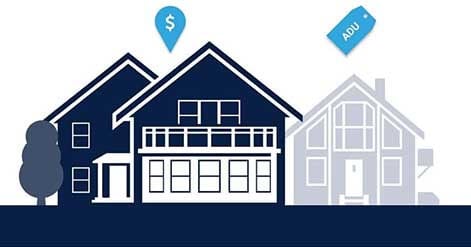Part 7 - How to wipe out $4 trillion of excess mortgage debt

Part seven of a nine-part series
After significant internal debate, I’ve concluded that repudiation of excess mortgage debt is the only workable solution to the current crisis. I don’t suggest this solution lightly as it has not only national, but also geopolitical implications since foreign central banks hold so much U.S. debt. While some people believe debt repudiation would lead to a complete lack of confidence in U.S. obligations and, in turn, lead to a total financial collapse, I believe the opposite is true. Our failure to mark the value of investments to current market prices and take necessary losses only increases the fear of investing in these instruments. Our refusal to see the plain simple truth that we cannot repay these obligations has frozen our credit markets and, as counter-intuitive as it first seems, debt repudiation is likely the only way to restore lender confidence and get credit flowing again.
Repudiating debt won't mean the end of lending due to a loss of investor confidence if the debt repudiation acknowledges the mistakes that were made, shares the pain among all involved to minimize the moral hazard and is accompanied by a clear plan to prevent those mistakes from being repeated. If debt levels are restored to sustainable levels and protections for investors are put back in place, then credit markets will return as investors compete for safe debt investments. By taking a proactive approach, we'd be far more likely to minimize losses then we would be if we continued to deal with the problem on a reactive basis. That's especially true since those reactions, like foreclosure moratoria, only delay the inevitable.
Unfortunately, we currently lack the political will to take this step. It would take incredible leadership to convince not only Americans, but also the rest of the world that debt repudiation was not only necessary, but also in everyone’s best interest. Homeowners who have negative equity would get a second chance. Homeowners who have equity would gain stability in their home's value. Creditors would gain by seeing losses minimized, risk reduced, and new opportunities to invest. Governments would gain by stabilizing tax revenue. And everyone would gain as the economy would regain health and again be capable of growth.
If we found the political will, I think it would be important to share the pain. Taxpayers should bear a portion of the losses because they allowed their elected representatives to enable this crisis through the Taxpayer Relief Act of 1997, the Financial Services Modernization Act and the Commodities Futures Modification Act. Loan originators and investors, including foreign central banks, should bear a portion of the losses because they made obviously bad loans, despite whatever assurances they may have received from ratings agencies or the U.S. government. All borrowers who were a part of these transactions should proactively help to resolve the issue, rather than walk away from their obligations, and those who used their house as an ATM should be held to a higher standard of accountability.
To that end, a carrot-and-stick approach for both lenders and borrowers should be brought to bear:
Lenders
Carrots:
- The federal government should offset a percentage of investors' losses to encourage them to proactively reduce loan balances for borrowers who qualify for a loan modification and allow short sales for those who don't. The offset should vary depending on the loan position and tranche in accordance with the level of risk for which the lender signed up. AAA-rated first mortgages should have as much as 70 percent of the loss protected while second mortgages likely should have only 10 percent of the loss protected. On a blended average, taxpayers should be on the hook for less than was spent on bank bailouts while this time addressing the real problem.
- Even without government credit, lenders would see higher returns on loan modifications and short sales since they can return 90 percent of current market value compared with 65 percent or less (after expenses) from a distressed home sale.
- Lenders should be allowed to foreclose without delays or moratoria on loans of borrowers who choose not to participate in a short sale or loan modification.
Sticks:
- Lenders should be required to review and either accept or reject short sale offers within 15 days and loan modifications within 30 days of receiving a complete application. If they fail to do so, they should be ineligible for any government relief.
- Bankruptcy cramdowns should be available to bankruptcy judges if and only if the homeowner has first fully cooperated with the lender to try to resolve the problem though a loan modification and short sale.
Borrowers
Carrots:
- Borrowers who qualify should receive a reduction in debt to 90 percent of the current value of their home. This carrot would essentially bring homeowner to the break-even point and allow them to reset and move forward. To qualify, the homeowner must be able to afford to repay the resulting principal balance with a 30-year fixed-rate loan at a market interest rate.
- Borrowers who don't qualify for a loan modification, but cooperate in a short sale should have their exposure to deficiency judgment under state tax law limited to $10,000 and the impact to their credit limited to two years.
Sticks:
- Borrowers who refinanced and pulled out cash should have to carry a personal note to repay taxpayers for the portion of the loss born by the government. That debt shouldn't be dischargeable in bankruptcy, except in cases of significant hardship.
- Borrowers who won't cooperate with a loan modification or short sale and thus force the lender to foreclose should owe income taxes on the amount of debt forgiven and remain liable for any deficiency judgment that may be allowed under state law. Any taxes received should be used to help defray taxpayers' losses under the program.
This approach is admittedly a rough sketch and many variations on this theme likely would work. The key is to elimintate the excess debt without creating moral hazard. Programs shouldn't provide incentives to make the wrong choices--and the only right choice is to return to sustainable levels of debt in as orderly a fashion as possible.


